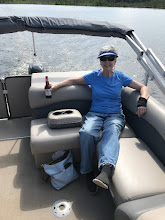
With the wind beginning to whip the tops of the tall ocotillo cactus, we pulled to a stop in the rutted, boulder strewn path called a dirt road in these parts, and took a break. Bill is driving his four wheel drive Dodge truck and we are on our way to explore the Fortuna mines and ghost town. I previously wrote about it on our website here: http://www.itchyhitch.com/fortuna-az.htm. At that time, Marc and I didn’t realize it was even out here and we serendipitously stumbled across it one day wandering around the bombing range. This day we know where we’re headed but still take a wrong turn, leading us onto the goat path, and not the main road. Travel is piteously slow as Bill carefully negotiates around the tire eating boulders that comprise wash after wash. Have fun finding the “road” in these pictures!


 A little farther along, Marc insists that we need to pull over and visit the taxi stand. The what??? It seems the Border Patrol offers aid and comfort at several stations along the way for those illegal’s who get into trouble crossing our border. Push a button; get a ride within an hour. Standing on the high hilltop the guys are enthralled with two Harriers playing tag overhead. This is the Barry Goldwater Bombing Range and travel here is by permit only. You definitely would not want to be caught out here during the live bombing runs.
A little farther along, Marc insists that we need to pull over and visit the taxi stand. The what??? It seems the Border Patrol offers aid and comfort at several stations along the way for those illegal’s who get into trouble crossing our border. Push a button; get a ride within an hour. Standing on the high hilltop the guys are enthralled with two Harriers playing tag overhead. This is the Barry Goldwater Bombing Range and travel here is by permit only. You definitely would not want to be caught out here during the live bombing runs.


Just when our backs and Marc’s fake Titanium knee-knocking seemingly won’t stand a minute longer on the rutted path, we drop down the hill and into the ruins of Fortuna. Since our last visit the local Marine Corps has posted signs of interest along a walking trail two miles long and a kiosk story of the area. It fills in a lot of the gaps for us on the history of the area. At the main mine shaft, 1100 feet deep and surrounded by chain link fencing, we see a group of four ATVers and sand buggies—our first company of the long day. Soon they leave and we have the place to ourselves as we pull over ready to make the hike to view the water reservoir and have our picnic lunch.




Before that though, we scuffle through hillocks of broken glass, all of it very old. Nothing meaningful is gleaned from the rubble with the exception that the locals of the time must have been exceedingly bored and proceeded to shoot up as much of their garbage as they could. It’s a shame since most shards are a deep purple (from sun aging) and the few larger green and brown pieces we find are very heavy and thick compared to modern glass. Marc finds the bottom of one embossed with the name of a town in New York. The detritus of a mining camp also includes an old coil mattress spring.



From the water storage area the view to the main mining area and distant barren hills is compelling. The wind is blowing so fiercely it nearly blows me over as I arrive at the top to look down into the cistern. Bill proceeds to sit on the very edge giving me the heebie-jeebies to the point where I can’t look and need to leave down the loose rock-laden path. A fall, at the very least, would leave him stuck down in the hole with no way out. Everything is so barren and quiet save for the whipping wind whistling in our ears, and the mind’s ghostly images of what life here must have been like stuck so far out in nowhere.




We take a different route back; proceeding down the Camino del Diablo, that “highway” from the 1500’s, which is still just a mere dirt rutted path requiring four wheel drive for miles down the wash, where we finally reach a washboard sand road and can kick up our speed to 10 mph. After six hours, we arrive back home, thoroughly tired out and oddly exhilarated.

